During compression, the ingredients can have a large effect on physical factors. For example, abrasiveness, moisture content and particle size all affect compressibility. Considerations must also be made of the properties of the finished product.
During their manufacture, tablets are
subjected to a great deal of physical abuse within the hopper in which they are
spun. During this time, chipping may occur. The extent of this depends on
tablet hardness. It is undesirable in terms of product quality and is also a
potential health risk to the consumer.
Once packaged and shipped, the transportation process can be damaging and cause fractures in weak tablets. Tablets must be sufficiently strong to withstand subsequent processing and manufacturing such as coating, as well as packing and transport. Once they have reached the consumer, tablets must appear flawless and have the correct physical properties for their designated purpose.
While the production of a very hard tablet may overcome the problem of chipping it is also known that the ingestion of a tablet that is too hard is subsequently passed through the digestive system with little or no effect. The tablets must be capable of breaking up in the body, delivering the required dose of drug at the required rate. For instance, conventional tablets that have a very high crushing force deliver no drug (or vitamin) at all.
The mechanical strength of controlled release tablets, which are designed to work over an extended period, can also be an important determinant of drug release, and thus effectiveness. It is therefore important to monitor and control the degree of compaction, and hence hardness, of these tablets. The strength of tablets is determined by the nature of the excipients used in the formulation and the process used to manufacture them.
The following text contains examples of six different testing techniques that might be applied to various types of tablet using a TA.XTplus Texture Analyser.
Diametral Compression
The most widely used method for characterising tablet properties is the diametral crushing test, where the force required to cause tablet failure is measured. Although a compressive force is applied to the tablet, it will usually fail in a tensile manner along the diameter of the tablet at right angles to the applied force. The failure force measured by the Texture Analyser can be converted to tensile strength.
Other measurements can be calculated from the force-distance time graph of a diametral crush test, including the work of failure, tablet brittleness and apparent failure viscosity.
The test requires a simple flat probe compression, but some thought must be given to the loading conditions and hold time of this type of test. If there is a split present in the tablet to enable it to be snapped in two, it must be aligned in the same orientation for each sample.
A project has recently been incorporated into Exponent to allow for biconvex tablets to be assessed.
Tablet granule compression
Granule hardness/compressibility testing is important to provide an indicator of the tabletting potential of granular materials, or a measure of friability or compaction strength of granules.
Where granules are irregular in form, the testing of single granules is discouraged as repeatability is compromised. In this instance, the testing of a fixed area of sample creates an averaging effect and improves the repeatability of the results. The Granule Compaction Rig provides a circular testing area into which the sample is contained before compression with a cylinder probe of similar diameter to the testing area.
Normally, the maximum force and energy (area under the curve) are taken and used as an indication of hardness. The higher the force and energy required to compress, the more difficult it will be to form the granules into tablets.
These last two testing techniques are related to the behaviour of tablet samples during use, rather than their mechanical properties during manufacture or transport.
Bilayer Tablet Shear Test
Bilayer systems typically contain an immediate-release component in one layer and the extended-release component in the other layer. However, the development and production of quality bilayer tablets is not without issues such as layer separation. The Bilayer Tablet Shear Rig provides the means to assess this problem. The tablet fits into the central cavity of a holder below a guillotine-type blade. The blade is pushed downward until the two components of the tablet are sheared apart. The shear force and distance to failure are measured.
Visual characterisation of the fracture surface is necessary to quantify the percentage of each fracture failure mode. This enables manufacturers to optimise their tablet formulations for adhesion of the two tablet components.
Tablet Coating Adhesion Strength Assessment
The Tablet Coating Adhesion Rig performs an important task in ensuring that changes to the composition of coatings do not adversely affect the efficacy of the medication. Solid inclusions in the form of aluminium lakes of water-soluble dyes, opacifiers (for example, titanium dioxide), and various inorganic materials are often added to tablet film coatings to improve their appearance (such as colour and opacity), barrier properties, and in some cases their film-forming characteristics.
Defects such as cracking and edge splitting and peeling can be a consequence of change of materials and can have a profound effect on the release of an active ingredient, especially if the tablet has been coated with an enteroinsoluble or sustained-release film.
This test provides a quantitative measure of the adhesion strength of the coating to the tablet surface. Such a test is useful for studying the consequences of changes in tablet coating formulation variables.
Tablet Disintegration
A thorough analysis of disintegration behaviour is vital for the formulation of fast-melt tablets (FMTs) to ensure reliable and consistent drug release. As with standard tablets, the tablet or wafer has to be resilient enough to endure manufacturing and shipping, but release sufficient disintegrants to deliver an optimum dissolution rate. The Tablet Disintegration Rig facilitates a reliable assessment of the mechanical properties of FMTs.
The rig closely replicates the in vivo conditions of the human mouth, enabling manufacturers to examine water absorption and the disintegration of associated particles. The unique geometry of the rig allows the disintegration medium to access the tablet from all areas. It is supplied with five probe heads to enable multiple sample preparation in advance of testing and fast interchange.
Measurement of Swelling
When exposed to an aqueous medium, certain tablets swell and rapidly form an interfacial rubbery or gelatinous layer. This layer allows some additional liquid to penetrate the tablet while also acting as a rate controlling layer for active diffusion. As the outer tablet layer dissolves, a new layer of tablet medium is exposed that retards diffusion and continues sustained, controlled drug release. One critical parameter in controlled release is aqueous solubility, which largely determines the drug's dissolution rate in the body – either immediately or over six, eight or twelve hours, for example.
Though dissolution testing is an established and necessary analysis for assessing efficacy and safety, texture analysis is emerging as a useful measurement technique for controlled release dosages. The technique can be used to measure the swelling rate of gels and gel coatings, allowing scientists to determine the time before the gel dissipates and active ingredients become available.
The TA.XTplus Texture Analyser is able to provide easy and accurate determination of dimensional changes associated with matrix hydration and swelling of complex formulations and results compare well to NMR imaging. Research using the TA.XTplus Texture Analyser has been carried out to precisely detect the glassy core/rubbery gel interface based on the approximation of the force-displacement profile slope to infinity.
To determine radial gel layer thickness, compacts are cut in half diametrically and immersed to allow ingression from all directions and to simulate the actual process of gel dynamics that occurs in dissolution studies. Swollen compacts are removed at predetermined time intervals for external profiling and to determine water penetration and gel layer thickness as a function of residence time in the buffer medium. Movement of the penetration front and the increase in gel layer thickness are determined with the Texture Analyser, which captures the complete profile of stress-strain behaviour. The resistance encountered by the probe is a function of the distance it penetrates into the swollen matrix.
By penetrating the swollen matrix, the
glassy polymer can be differentiated from the polymer gel. This is a simple
means of understanding the time-dependent polymer growth behaviour that can be
used on a routine basis. It is a valuable tool to assist the formulation
scientist in selecting the correct polymer for a particular application.
There is a Texture Analysis test for virtually any physical property. Contact Stable Micro Systems today to learn more about our full range of solutions.
For more information on how to measure texture, please visit the Texture Analysis Properties section on our website.
 The TA.XTplus texture analyser is part of a family of texture analysis instruments
and equipment from Stable Micro Systems. An extensive portfolio of
specialist attachments is available to measure and analyse the textural properties of a huge range of food products. Our technical experts can also custom design instrument fixtures according to individual specifications.
The TA.XTplus texture analyser is part of a family of texture analysis instruments
and equipment from Stable Micro Systems. An extensive portfolio of
specialist attachments is available to measure and analyse the textural properties of a huge range of food products. Our technical experts can also custom design instrument fixtures according to individual specifications.No-one understands texture analysis like we do!
To discuss your specific test requirements click here...
 |  |  |

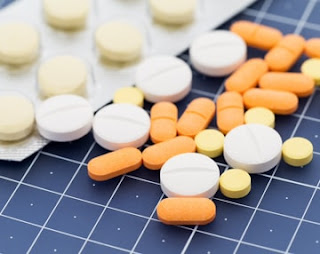
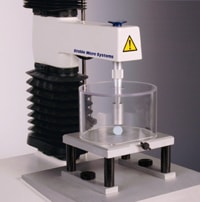


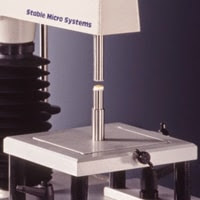
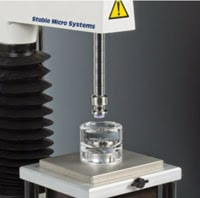
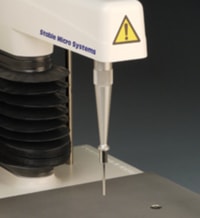
No comments:
Post a Comment